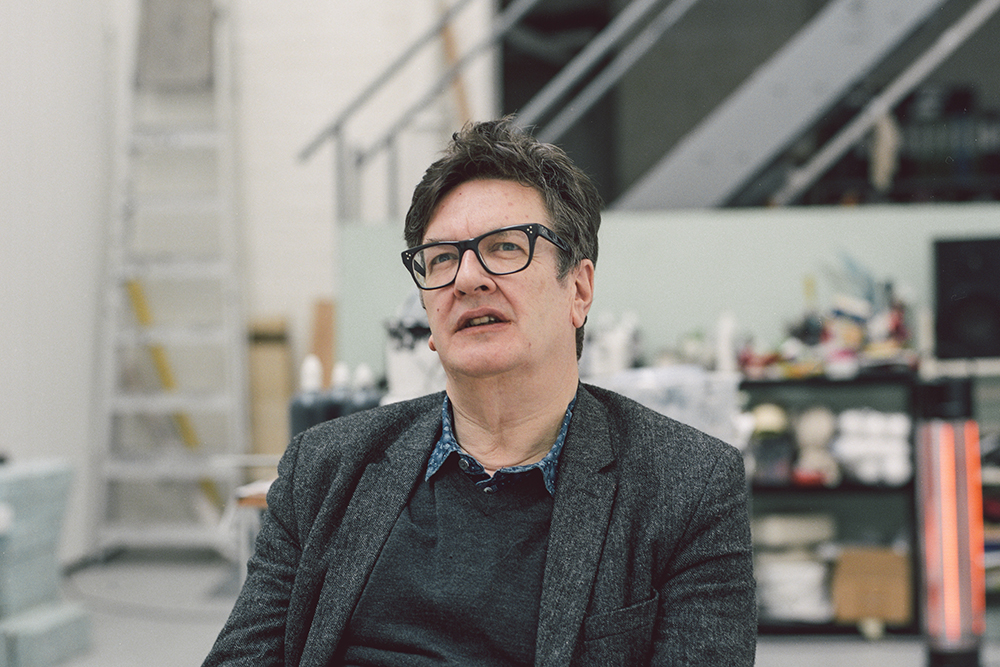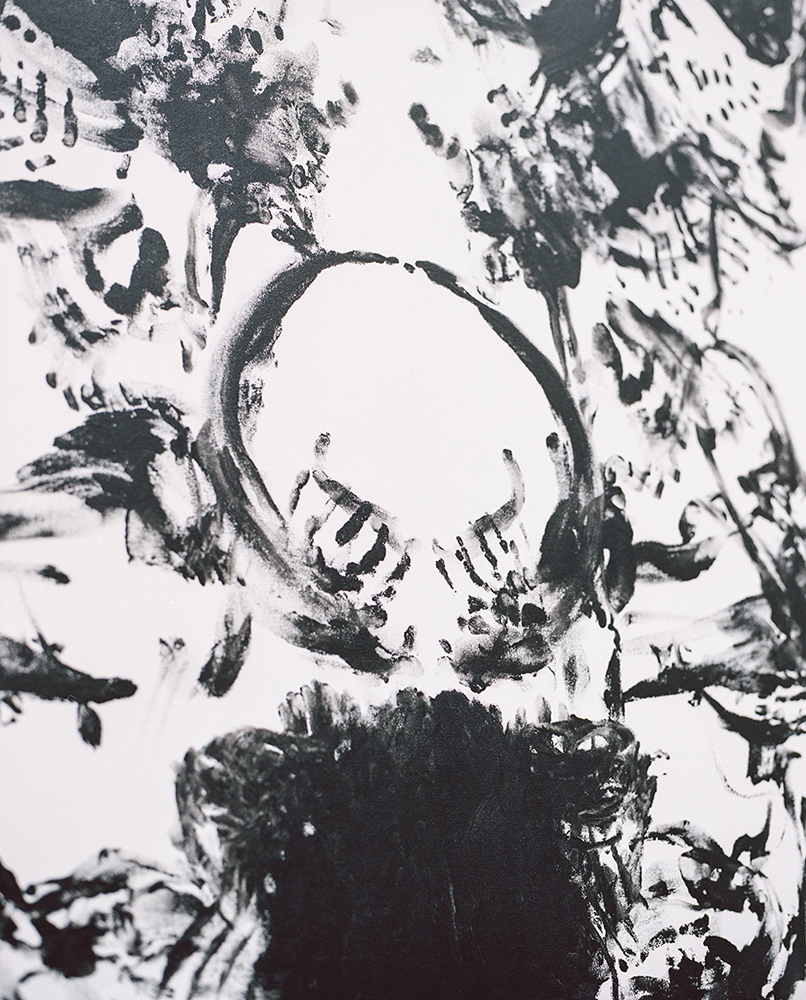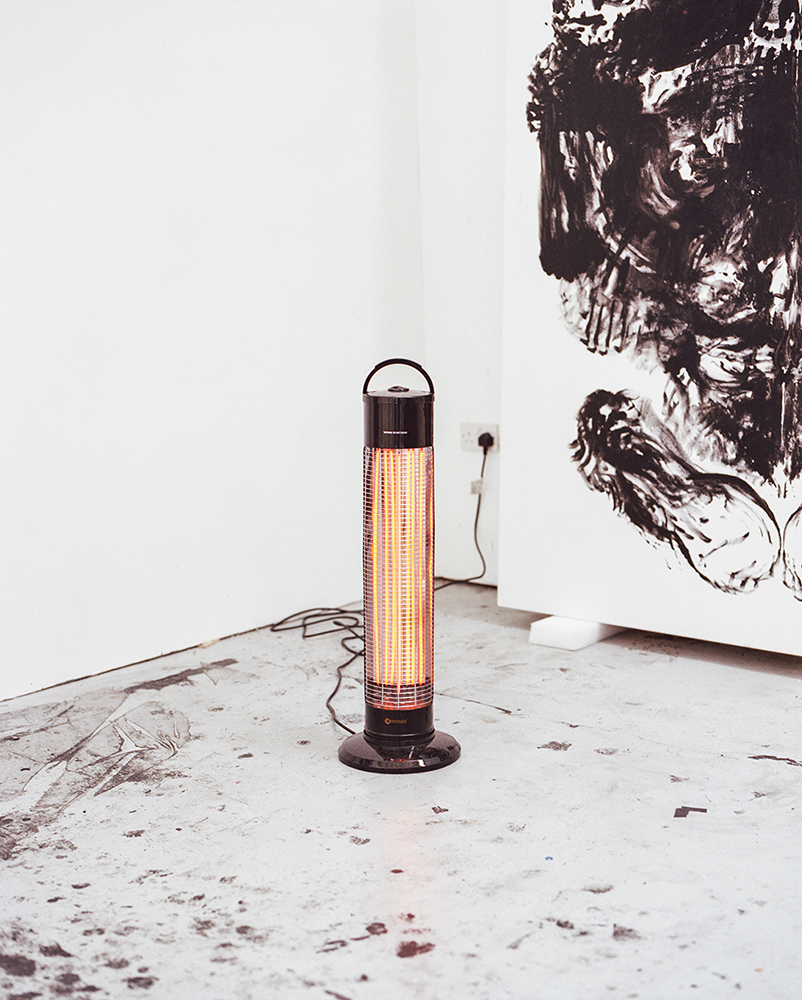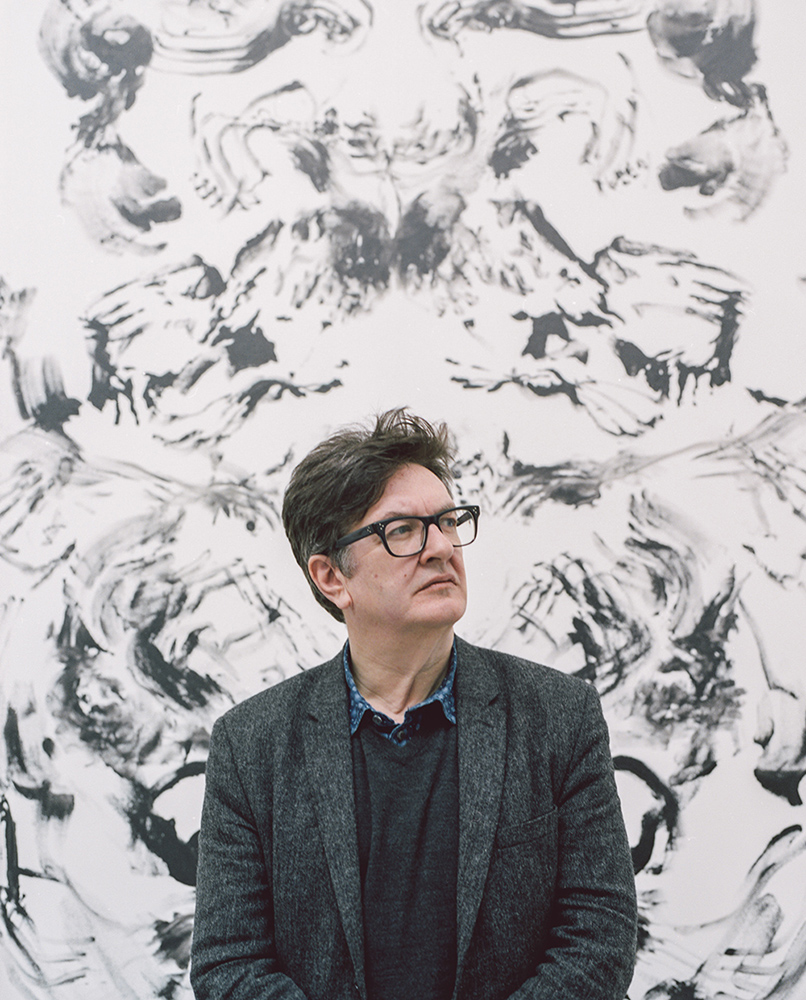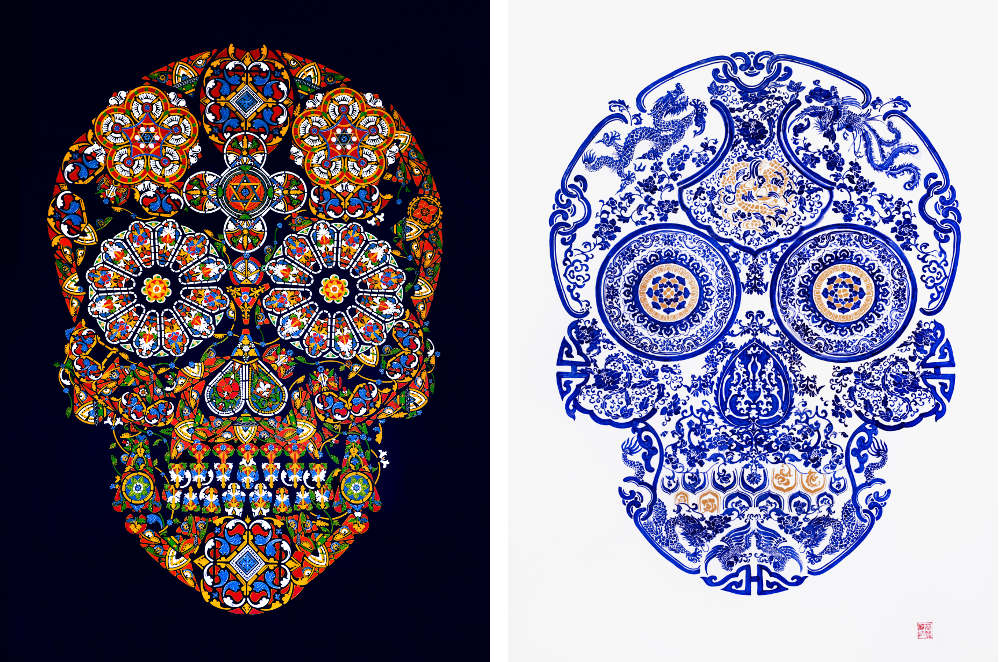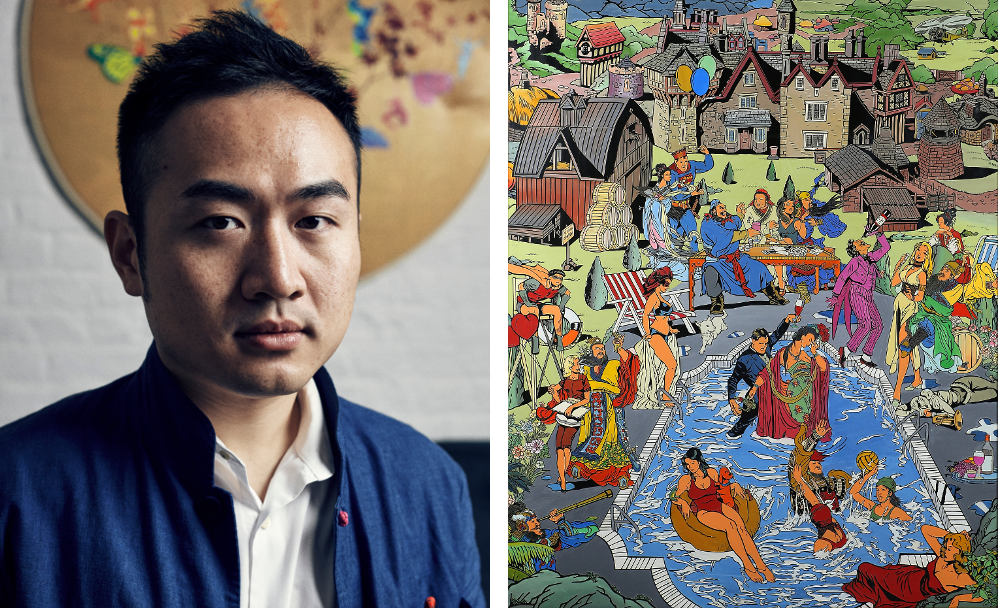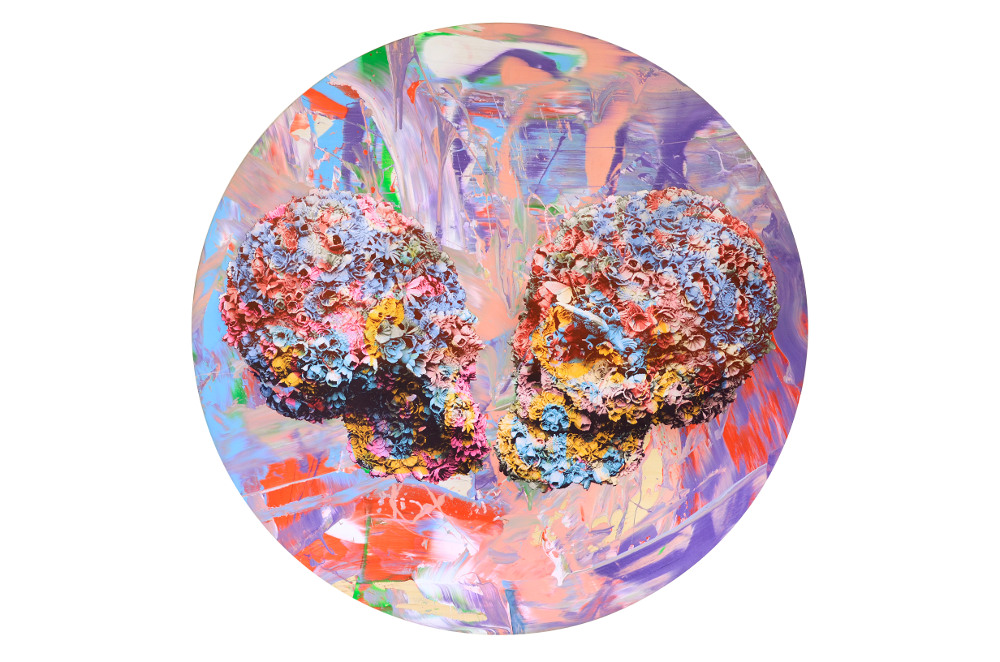Ahead of Mark Wallinger’s new London exhibition, PORT visits the Turner-prize winning artist’s studio to discuss psychoanalysis, his return to painting and coming to terms with your own mortality
It’s been two years since his last exhibition and I’m sat, drinking coffee, with Mark Wallinger in his North London studio. White canvases smeared with symmetrical patterns are stacked against tall, white-washed walls, reaching almost to the ceiling struts and skylights. Pots of paint stand on tables and there’s a wide, fittingly Freudian couch. As we talk, Wallinger smokes an e-cigarette drawing from it periodically; as I listen back to my recording later, he sounds a little like Darth Vader.
Looking at the finished, half-packaged work waiting to be shipped down to Hauser and Wirth’s Saville Row galleries, I ask Wallinger if these moments before the show opens make him nervous. As a one of the most important living British artists – a Turner Prize winner, a representative of Great Britain at the Venice Biennale and the first artist commissioned for London’s Fourth Plinth in Trafalgar Square – his answer surprises me. “Thinking about this show, I was struck by the word ‘apprehensive’ or ‘apprehend’,” he says. “To see, to notice, to understand, to fear… some of those feelings.”
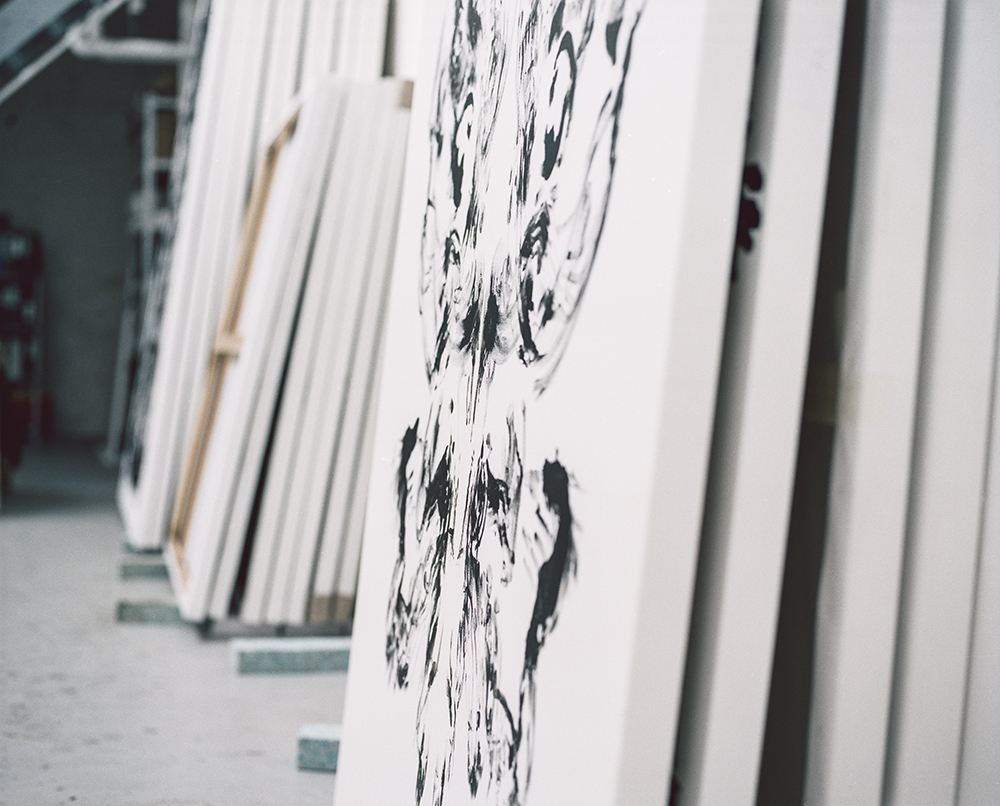
If his new work is making him uneasy, it’s because the series of 65 monumental hand-painted canvases – the focus of the show – are deeply personal and a significant departure from his typically bold, public work.
His artistic projects to date have seen him dress up in a bear costume while walking around a deserted Berlin gallery at night, erect a lifesize sculpture of Jesus Christ crowned with thorns and recreate an anti-war protest from Parliament Square in the Tate Britain. Wallinger has always been stylistically fluid; he never repeats himself.
“You only go round once, don’t you,” he says. “I think it’s part of the job description of an artist to push things, but maybe it’s just a low boredom threshold.” Now, however, Wallinger is shifting the thematic character of his work from a poised meditation on identity, formed through nationality, religion and race, to a more personal idea of identity – a “voyage of self-discovery”, as he puts it.
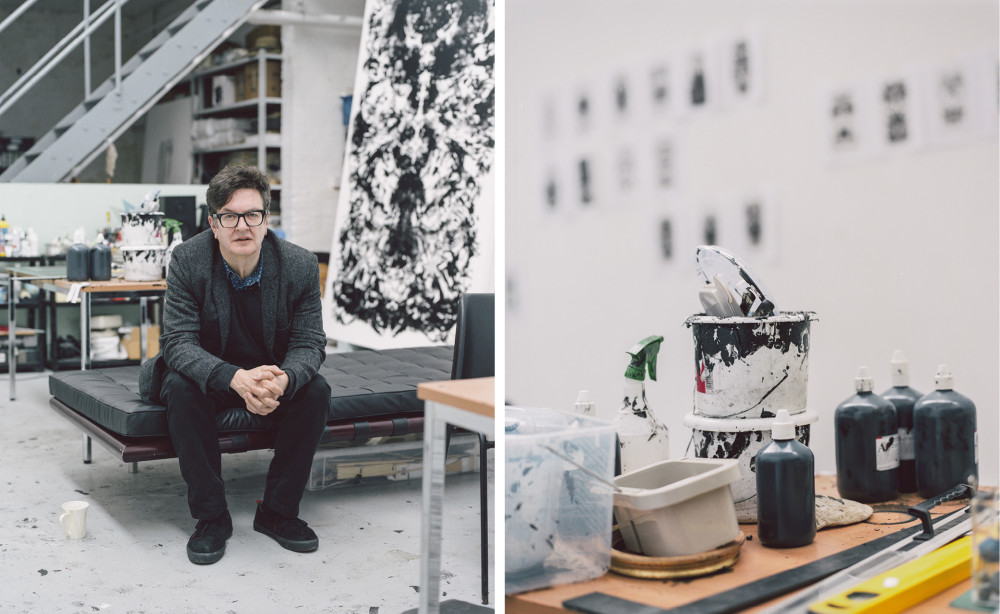
ID, opening on 26th February 2016 at Hauser & Wirth London, is structured around Sigmund Freud’s conception of the mind – the instinctive drive of the id, the critical, moralising superego and the rationalising ego that mediates between the two. It’s the culmination of a year’s work away from the art world and the bustle of the city, having moved his studio from Soho to Archway 12 months ago. “I’m in analysis at the moment, but in another sense it’s Darwinian that I move into this tall space,” he says. “The self-portraits I had been working on can evolve to an abstract-expressionist scale.”
Wallinger shows me these self-portraits, and I see capital ‘I’s in various forms of abstraction, sometimes bold with clear lines, sometimes bordering on illegible. Following these works, Wallinger says he moved to canvases that were his span wide by double his height and, dispensing with brushes, stood, nose to the canvas, spreading the paint with both hands. The resulting works that stand before me are gigantic Rorschach paintings that invite the viewer to engage, to see what they see in them, while at the same time being a cathartic, instinctive and elaborate self-portrait of the artist.
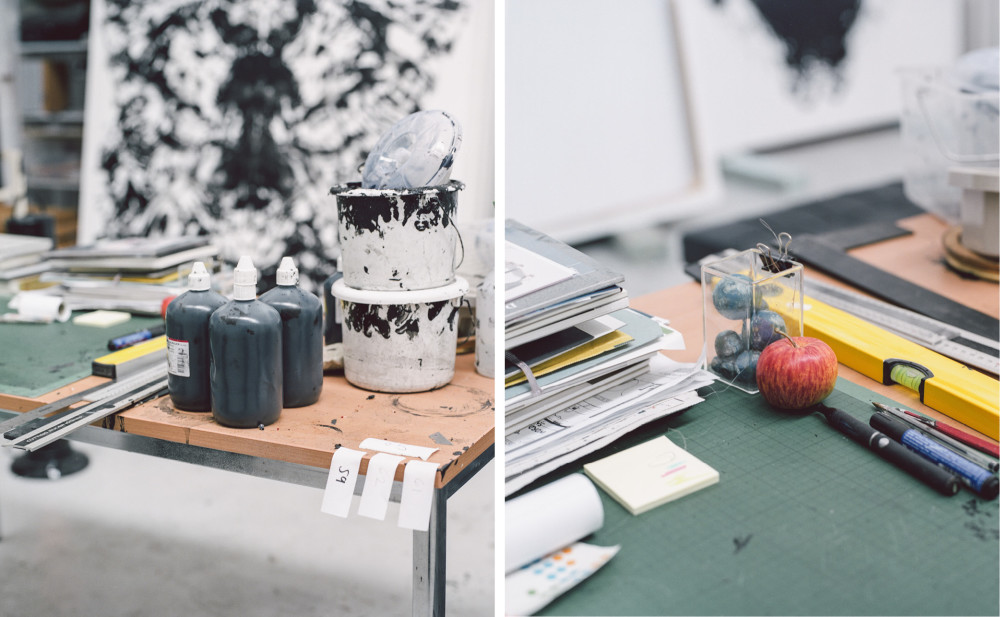
I wonder why there is a such a dramatic shift to the personal in this exhibition, reflected in the autobiographical significance of Orrery, a videoed circumnavigation of the roundabout that he learnt to drive on, and Shadow Walker, a film of his shadow as he walks down Shaftesbury Avenue.
“I suppose it’s to do with life events and getting older, having been on the planet for longer than I’m going to be in the future.” Could this be a coming to terms with his own mortality? Wallinger pauses for long time, staring at the ceiling: “I suppose there’s a degree of that, a bit of urgency… but there’s joy, I hope, in the paintings.”
Despite this focus on himself, Wallinger has retained his typical irreverent wit. Ego, for example, is a solipsistic parody The Creation of Adam from Michelangelo’s Sistine Chapel ceiling, where Wallinger has simply shot his left and right hand with an iPhone. It is wonderfully playful – humorously and self-deprecatingly comparing his almost effortless photography with the painstaking, highly-skilled act of painting, while still speaking seriously about our inability to prove that anything but one’s own mind exists.
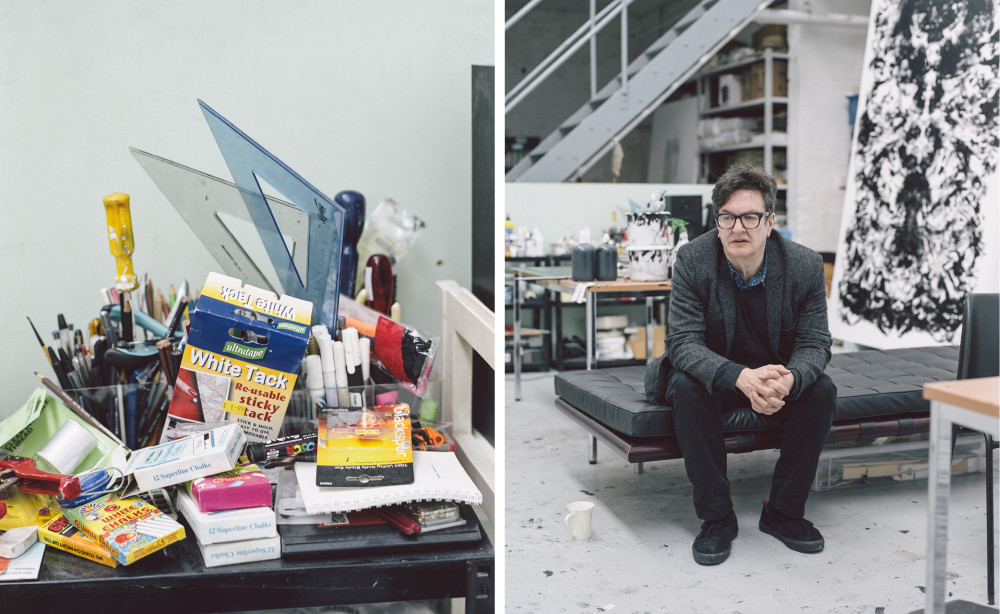
Wallinger’s latest work is refreshing, not just because it shows a successful middle-aged artist continuing to develop his style – here turning his measured, thoughtful gaze on himself – but it is an antidote to the ever-accelerating interconnectivity we experience day-to-day. It is the luxury of being an artist to be able to stop, unplug and think. As Wallinger says: “a lot of the time trying to make art is trying to shut out as much of the world and as many decisions as possible, to get to some sort of purity.” Somehow, Wallinger’s ID manages to do just that.
ID will be showing across both Hauser and Wirth spaces on Saville Row from 26th February to 7th May
Photography Jasper Fry
